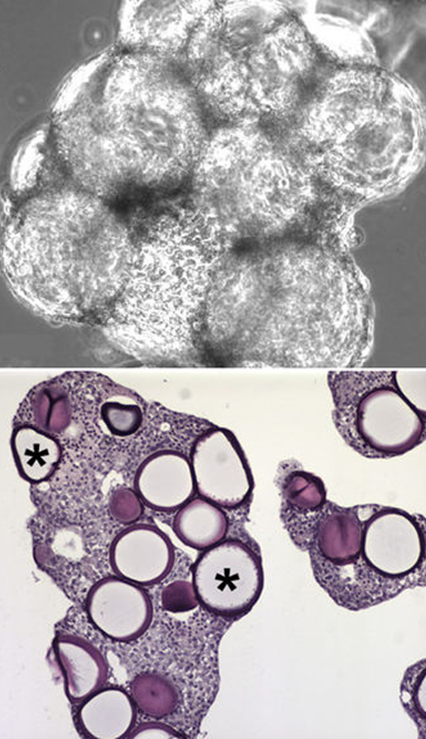Transfection Information
HuH-7 cells are an immortalized hepatocellular carcinoma cell line originally resected from a male, 57 year old liver tumor. The HuH-7 cell line is an epithelial-like adherent cell line containing multiple mutations including a point mutation in p53. HuH-7 is receptive to transfection with certain viruses. As an example, HuH-7 cells have been used to elucidate how HCV, the hepatitis C virus, interacts with hepatocytes in vivo. HCV is a flavivirus which causes acute hepatitis, chronic hepatitis and cancer in the host organism. The HCV virus has affected approximately 170 million people worldwide, a number which greatly incentivizes to control the infection and downstream effects of the HCV virus.
HuH-7 Cell Transfection Protocol
An optimized HuH-7 Transfection Reagent Kit is available from Altogen Biosystems, which includes:
- Huh-7 Transfection Reagent (0.5 ml/ 1.5 ml / 8.0 ml)
- Transfection Enhancer (0.5 ml), and
- Complex Condenser (0.5 ml)
The kit is a biodegradable polymer reagent optimized to deliver siRNA, miRNA or DNA plasmid intracellularly with low toxicity. The 24-well plate protocol to transfect HuH-7 cells is here:
- Plate 10,000-15,000 Huh-7 cells per well in 0.5 ml of complete growth medium 12-24 hours prior to transfection
- Wash with 1xPBS and add 0.5 ml of fresh growth medium
- Prepare transfection complexes by mixing 40 µl of serum-free medium, 4.5 µl of transfection reagent, and (Referred to a final volume including growth medium)
- 500 ng DNA ( or mRNA), or
- 30 nM – 5o nM of siRNA (or microRNA)
- Incubate transfection complexes at RT for 15-30 minutes
- Optional: Add 2 µl of Complex Condenser. This reagent increases transfection efficiency by reducing the size of transfection complex; however, it may increase cell toxicity
- Add prepared transfection complexes to 0.5 ml of complete growth medium with Huh-7 cells (from step 2)
- Incubate cells at 37°C in a CO2 incubator
- Assay for phenotype or target gene expression 48-72 hours after transfection
Optional: Adding Transfection Enhancer reagent can increase the transfection efficiency. Add 2µl of Transfection Enhancer reagent 12-24 hours after transfection
If the viability of Huh-7 cells being transfected is affected at 16-24 hours post-transfection, changing the growth medium and eliminating redundant exposure of cells to transfectant can decrease the level of cytotoxicity
HuH-7 Transfection Services
Transfection services using HuH-7 cells (ELISA, IC-50, assay development, cell cycle, proliferation, apoptosis, HuH-7 CDX xenograft mouse models) are offered by Altogen Labs (www.altogenlabs.com).
Publications
- The HuH-7 cell line derived xenograft mouse model was utilized in this study to test pitavastatin as an anti-tumor drug. Previously, pitavastatin had only been approved as a therapeutic for lowering blood cholesterol. Experimental results of the study exhibited that pitavastatin inhibited tumor growth and colony formation and may be developed further as a drug for liver cancer treatment. LINK: https://www.dovepress.com/pitavastatin-suppressed-liver-cancer-cells-in-vitro-and-in-vivo-peer-reviewed-fulltext-article-OTT
- HuH-7 cells grown in RWV suspension are incubated in a horizontally rotating cylindrical culture vessel that allows cells to grow in 3D aggregates, without the turbulence associated with conventional, stirred bioreactors. Cells cultured in RWV are grown much like cells of a fetus in a mother’s uterus. The HuH-7 cells experience an environment with aspects resembling microgravity and “suspended animation”, where the cells are in constant free-fall. The fluid dynamics of the RWV cell culture allows cells to develop as they would grow in vivo. See image below for aggregate bead formation. LINK: https://virologyj.biomedcentral.com/articles/10.1186/1743-422X-6-103

Figure: RMV Aggregate Images: Phase contrast image of HuH-7 aggregates (top image). Bright field image of H&E stained sections of HuH-7 aggregates.
*”Three-dimensional Huh7 cell culture system for the study of Hepatitis C virus infection.” Sainz B, TenCate V and Uprichard SL. Virology Journal. V6:103. 15July2009.
Links
Purchase HuH-7 Transfection Reagent
List of Companies Offering Lab Services
Transfection. Cells and Molecular Biology Research Methods, Protocols, and Lab Techniques
HuH-7 Cells | HuH-7 Cell Culture | HuH-7 Transfection | Get HuH-7 Transfection Reagent